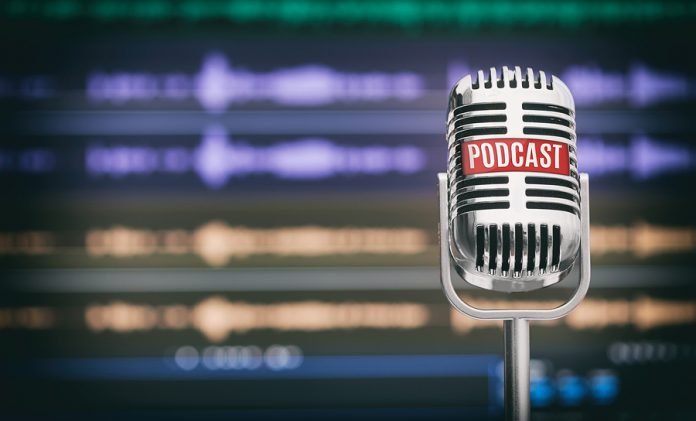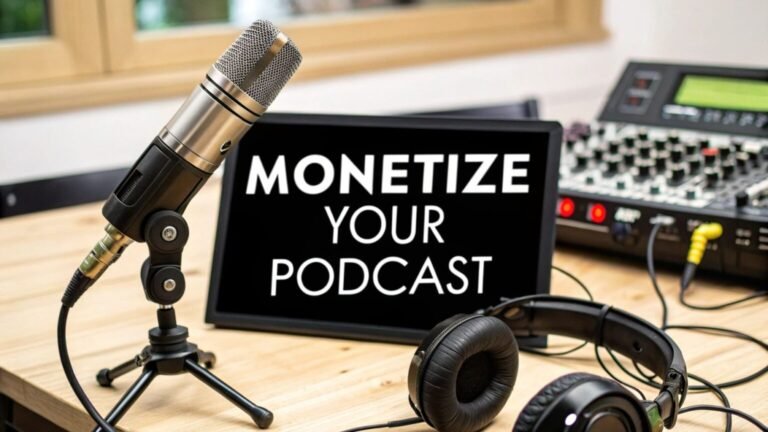File Format and Settings for Podcast Publishing: What You Need to Know
Publishing your podcast in the right file format and settings is essential for ensuring excellent audio quality and a smooth listening experience across all platforms. Choosing the wrong format can affect sound clarity, file size, and even how quickly your podcast is downloaded. In this guide, we’ll break down the best file format and settings for podcast publishing.

Why File Format & Settings Matter in Podcasting
Think of file formats like pizza crusts. Thin crust, deep dish — they both deliver, but some do it better depending on what you’re hungry for.
Your file format and settings directly impact:
- Audio Quality: Clearer sound increases listener retention.
- File Size: Smaller files load faster and consume less storage.
- Compatibility: Proper format ensures smooth playback on all platforms.
If your file’s too chunky (looking at you, WAV files), it’s gonna be a pain to upload and for people to stream. If it’s too compressed, you’ll lose that crispy sound you worked so hard to perfect.
Recommended File Format for Podcast Publishing
MP3 (MPEG-1 Audio Layer III)
MP3 is the industry-standard format for podcast publishing:
Pros:
• Universally compatible with all podcast directories and platforms
• Small file size with good sound quality
Cons:
• Compressed format (some loss of audio quality)


Alternative Format: AAC (M4A)
AAC offers slightly better audio quality at the same bitrate but isn’t as universally compatible as MP3.
Use When:
• Targeting Apple Podcasts listeners primarily
• Prioritizing slightly better sound quality over universal compatibility
Ideal Bitrate and Audio Settings for Podcasts
Recommended Settings
- File Format: MP3
- Bitrate: 128 kbps (stereo) or 96 kbps (mono)
- Sample Rate: 44.1 kHz
- Channels: Mono (for speech-heavy podcasts) or Stereo (for music-intensive shows)
- Loudness Level: -16 LUFS (stereo) / -19 LUFS (mono)
These settings balance sound quality and file size for an optimal listening experience.

Mono vs. Stereo: Which Should You Use?

Mono
Best For:
• Interview podcasts
• Speech-heavy content
Pros:
• Smaller file size
• Clear voice reproduction
Stereo
Best For:
• Podcasts with heavy music or sound design
• Storytelling formats
Pros:
• Enhanced listening experience for music and sound effects
Exporting Podcast Files Correctly
When exporting your podcast episodes, follow these best practices:
Use Consistent File Naming
Example: PodcastName_Episode01_Title.mp3
Add Metadata
Include episode title, author, and cover art to ensure your podcast looks professional across platforms.
Use ID3 Tags
Add important information to the audio file, such as:
• Episode title
• Podcast name
• Host/guest names
• Episode number

Hosting and Compression Considerations
Many podcast hosting platforms apply additional compression after upload. To avoid unnecessary quality loss:
- Upload files at recommended settings (128 kbps MP3 or higher)
- Avoid overly compressing files before uploading
Tools for Formatting and Exporting Podcasts

Use these tools to export your podcast files correctly:
- Adobe Audition
- Audacity
- GarageBand (Mac)
- Hindenburg Journalist Pro
- Auphonic (for loudness normalization and metadata tagging)
Common File Format Mistakes to Avoid
Using High Bitrate Unnecessarily
Bitrates above 128 kbps unnecessarily increase file size without noticeable sound improvement for spoken content.
Forgetting Metadata
Missing tags can affect how your podcast appears on platforms.
Uploading Uncompressed Files
WAV or AIFF files create large downloads and slow streaming. Always compress to MP3 or AAC.

Ready to Optimize Your Podcast File Settings?

Choosing the right file format and settings ensures your podcast sounds professional and reaches listeners without technical hiccups. Simple tweaks can significantly improve listener experience and platform compatibility.
At Social Peak Media, we handle every step of podcast production, including professional file formatting and publishing. Contact us today to learn how we can simplify your podcasting process.
Disclosure: Our blog contains affiliate links to products. We may receive a commission for purchases made through these links. However, this does not impact our reviews and comparisons. We try our best to keep things fair and balanced, in order to help you make the best choice for you.







